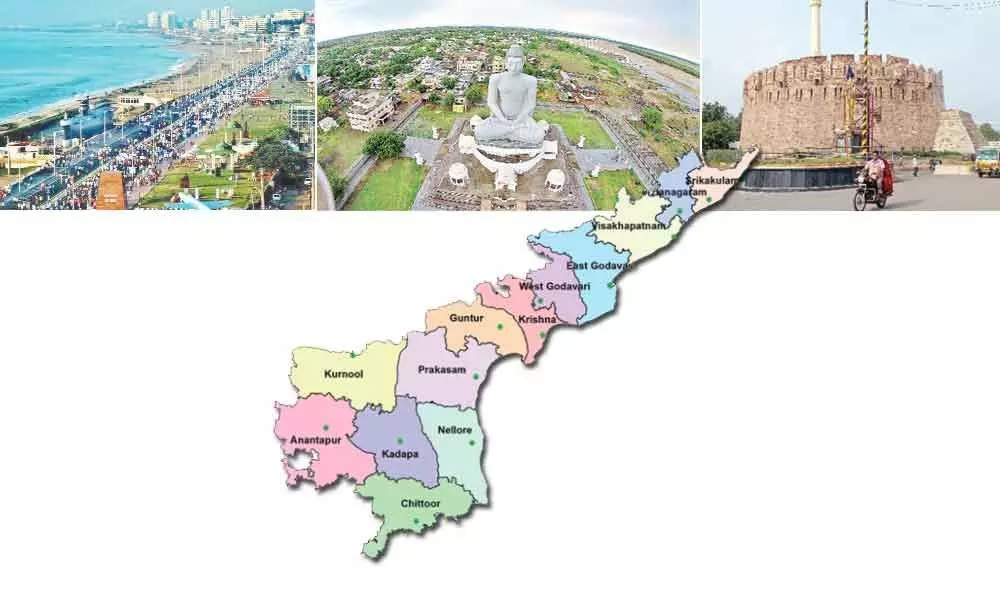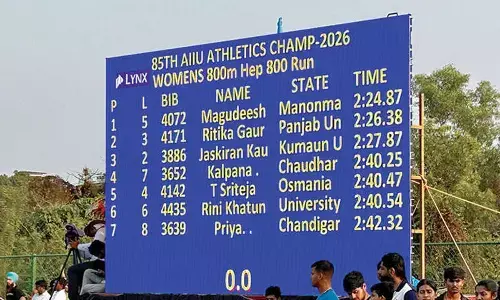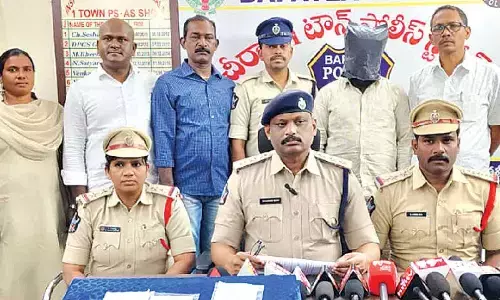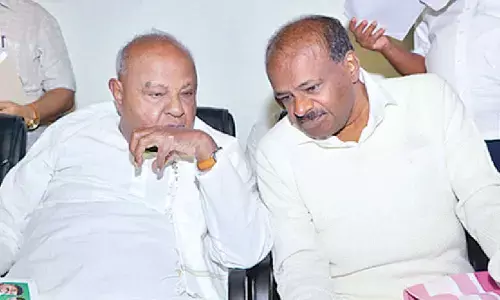Capital, Andhra's unfinished dream for decades

With TDP's Naidu missing a rare opportunity to build capital city for Seemandhra, will YS Jagan Mohan Reddy do the honours?
History tells stories that we often prefer to ignore. Some are good stories. Some are painful stories which if we prefer to listen to them, teach us the best lessons for our brighter future.
One such painful story is Seemandhra's tryst with a dream to have a capital city of its own. It's not that Andhra and Rayalaseema, the regions that Seemandhra represents, were never home to a capital city. In fact, Andhra region has a rich history in this aspect.
Satavahanas ruled a major part of India for over 400 years from late second century BC, from what is now known as Amaravathi in Guntur district of Andhra Pradesh. Subsequently, several kingdoms and dynasties ruled from the two regions.
But the 'capital city' problem of people from Seemandhra started during British rule when the two regions were part of Madras Presidency dominated by Tamils. Madras Presidency, as its name suggests, had Madras as capital. But Telugu people from Andhra and Rayalaseema yearned for a State and identity of their own.
While fighting for separate Andhra province, leaders from Andhra and Rayalaseema entered into an agreement in 1937 on how to distribute capital city and high court between the regions when a separate State was to be formed. Under this agreement, now popular as Sribagh Pact, Rayalaseema, being a backward region, had been given the option of choosing capital city or high court.
But when the time for the formation of Andhra State came after Indian gained Independence in 1947, Seemandhra leaders wanted Madras as capital city for their new province. But, the then Jawaharlal Nehru government did not agree for it.
Potti Sreeramulu, a freedom fighter from Nellore district, went on an indefinite hunger strike on October 19, 1952, demanding Andhra State with Madras as its capital.
The central government did not relent despite widespread agitations taking place across Seemandhra to support his fast. Sreeramulu died on December 15 while fasting. Post his death, agitations in support of Andhra State turned violent, forcing the Indian government to grant Andhra State. However, Madras city remained with Madras Presidency.
With no other choice, leaders from Seemandhra chose Kurnool, often described as Gateway of Rayalaseema, as capital city for Andhra State. However, Kurnool's dream run as a capital did not last beyond three years as it had to pass on the coveted status to Hyderabad when Andhra State was merged with Telugu speaking parts of Hyderabad State to form Andhra Pradesh in 1956.
However, Seemandhra's tryst with Hyderabad as capital is more tragic. It had to forgo the City of Nizams after cherishing the city as its proud capital for over six decades, in the aftermath of bifurcation of Andhra Pradesh in 2014 following a prolonged agitation for Telangana State.
This acrimonious divorce clearly reveals Seemandhra's misfortune and unlucky fate when it comes to its capital city aspirations. When India was partitioned in 1947, New Delhi which has been capital for the Indian subcontinent since time immemorial stayed put in India.
All-India Muslim League led by Muhammad Ali Jinnah fought for the creation of separate Muslim country in Indian subcontinent and succeeded in forcing British rulers to carve Pakistan out of India. As Muslim leaders demanded and fought for Pakistan, they left New Delhi to India and developed their own capital, now popular as Islamabad.
When Gujarat was carved out of Bombay State in 1960 following Mahagujarat movement, Gujarati leaders left Mumbai, the capital of Bombay State, to Maharashtra and developed their own capital in Gandhinagar. In these two examples, people who agitated for the division or partition developed their own capitals, leaving the existing capital city to the parent State or country.
But the division of Andhra Pradesh in 2014 makes a different story. While Telangana people wanted a separate State and bitterly fought for it, it was Seemandhra people who had to forgo the capital city despite fighting against the bifurcation. That means people who fought for division got the capital city while people who were against the division were left capital-less. That's ironical indeed.
As a proud Telanganite with roots in old Karimangar and present Bhupalpally district, I always cherish the presence of Hyderabad in Telangana. We, the Telangana people, have every right to enjoy the fruits of Hyderabad city. However, the above narration is only to stress the point as to how unlucky Seemandra people are when it comes to capital city.
But TDP president Nara Chandrababu Naidu, known for his political acumen, had the chance of building a capital of their own for Andhra and Rayalaseema people when he became the first Chief Minister of Andhra Pradesh sans Telangana in June 2014.
With Hyderabad, the 430-year-old city founded by Muhammad Quli Qutb Shah in 1591, the capital city for combined Andhra Pradesh for over six decades and a big revenue churner, in Telangana's kitty post the bitter separation, the residual Andhra Pradesh that comprises Andhra and Rayalaseema regions obviously needs a capital of its own, that too a big one. Capital is a long-cherished dream of Seemandhra and there is no second opinion about it.
However, Naidu made grandiose plans for building a world-class capital city for truncated Andhra Pradesh and chose fertile lands on southern banks of River Krishna near Vijayawada as the location of the Greenfield capital. Interestingly, he named it as Amaravati. Perhaps, he took inspiration from nearby Amaravathi town, once capital of Satavahanas.
His plans for a mega capital city got a boost when over 25,000 farmers from 29 villages came forward to give over 34,000 acres of land under land pooling scheme announced by the Naidu government in 2015. These 29 villages form core part of the Greenfield Amaravati capital. Enthused by farmers' response, he roped in London-based Foster + Partners, a globally renowned architecture firm, to design iconic buildings.
He even constructed temporary assembly, temporary secretariat to buy more time to develop iconic buildings. Naidu also succeeded in bringing Singapore government onboard for the capital city. He went to the town claiming how he could convert the crisis of AP not having a capital into an opportunity by planning a Greenfield capital.
Going by the way his government advertised about the capital plans, many people thought that Seemandhra people would soon be able to realise their long-pending dream of owning a capital city.
But Naidu's mega Amaravati city dream went sour when he miserably lost Assembly elections in May last year. YSRCP president YS Jagan Mohan Reddy stormed to power with a massive mandate.
The young leader who became Chief Minister at the age of 46 years has now decided to shelve Amaravati project and establish three capitals instead of one. With this, capital city dream of Seemandhra people is now back to square one.
Political claims and counterclaims on the YSRCP government's three-capitals plan apart, Jagan Mohan Reddy has a unique opportunity to build a capital for Seemandhra people. Amavarati is the best choice as capital city for AP if the Jagan govt has patience and perseverance to develop the Greenfield capital.
Furthermore, a single capital city is essential for Andhra Pradesh to increase its income fast in order to reduce its fiscal deficit and spend more on welfare schemes.
But If the government sticks to three-capitals plan and set up executive capital in Visakhapatnam, it should develop the coastal city at faster pace and should transform it into a megapolis. That way, he can fulfill the decades-long 'capital city' dream of Seemandra people. Will he do the honours? Time will tell.

















